With our background information, we help to correctly classify current issues related to the DGNB. In our studies, we examine aspects of sustainable building based on our many years of expertise.
Background information and studies for download
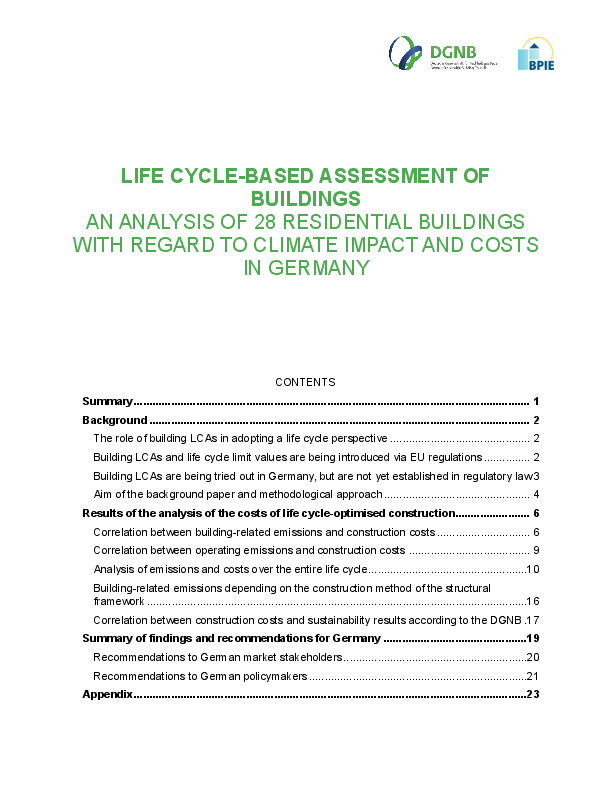
Life cycle-based assessment of buildings an analysis of 28 residential buildings with regard to climate impact and costs in Germany
Whereas in the past, the focus was strongly on the efficient use of energy for building operations, the perspective has increasingly shifted toward a life cycle approach. Against this backdrop, the DGNB conducted a joint short study with BPIE to analyze 28 DGNB-certified residential buildings in terms of their climate impact and costs. The survey clearly shows that there is no clear correlation between the life cycle assessment values and the manufacturing costs of the properties. The same applies to construction costs in relation to the certification level achieved. If the costs are considered not only for construction but over the entire life cycle, the short study shows that the operating costs of newer projects become more relevant.
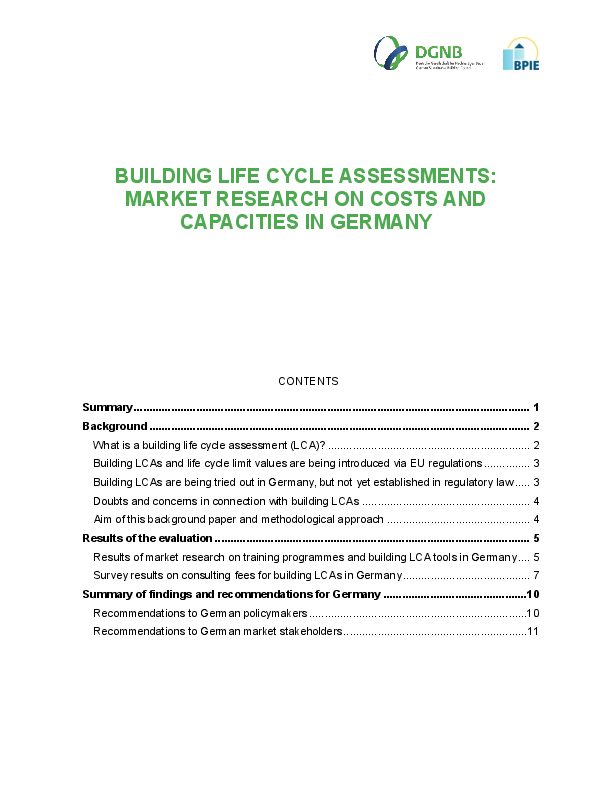
Building life cycle assessments: market research on costs and capacities in Germany
Building life cycle assessments make it possible to consider the environmental impact of a building over its entire life cycle. With the implementation of the EU Buildings Directive, this methodology will also become mandatory for new buildings in Germany from 2028 at the latest. Against this backdrop, the DGNB has decided to conduct a joint short study with the BPIE to create a sound knowledge and data basis for the debates surrounding the costs and opportunities associated with calculating building life cycle assessments. The survey clearly shows that the relevance of the methodology is increasing, while also demonstrating that the consulting costs incurred vary greatly.

The impacts of renovations on our climate: a life cycle-based assessment
To achieve climate targets, ensure energy security, and maintain long-term asset value, the renovation of our building stock is both necessary and worthwhile. In this context, questions repeatedly arise regarding the actual climate impacts of renovation measures. For this reason, 19 DGNB-certified renovation projects were evaluated with regard to their life cycle assessment. The results clearly show that the renovation measures of these projects cause significantly fewer climate impacts than new constructions.

Environmental Product Declarations for construction products: a review of availability, costs and trends in Germany
This joint report by the DGNB and BPIE is based on an evaluation of Ökobaudat, the German life cycle assessment (LCA) database, as well as interviews with leading German EPD programme operators, LCA service providers, and a survey of building material manufacturers. It takes a comprehensive look at current developments, challenges and opportunities in connection with environmental product declarations (EPDs), which are a key element in the life cycle assessment of buildings, and makes recommendations to policymakers and market players. | This document is based on a translation of the original German version with selective adaptations.

Small residential buildings: comparison of DGNB and BiRN
This document is currently only available in German.
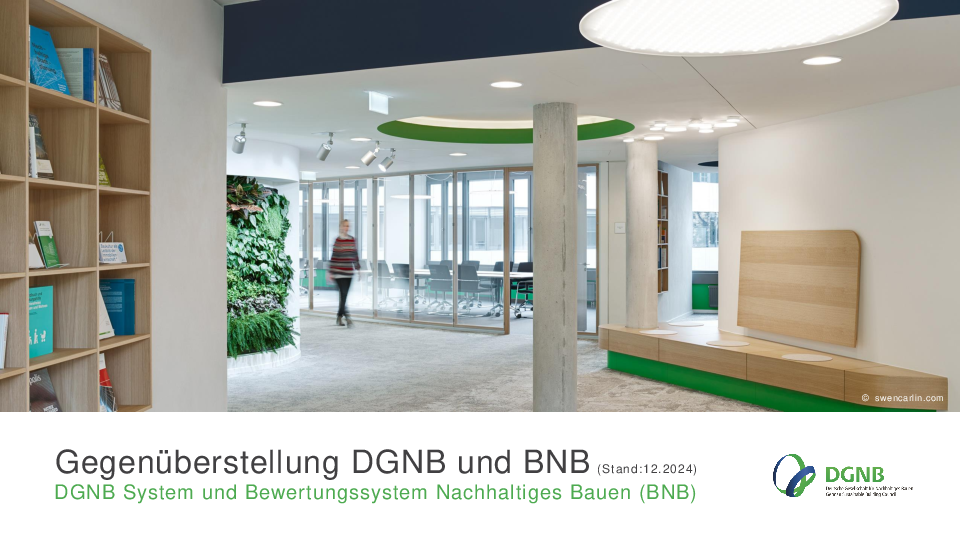
Comparison of DGNB System New Construction, Version 2023 and Assessment System for Sustainable Building
The DGNB has compared its System for New Construction, Version 2023 with the Assessment System for Sustainable Building. The comparison looks back on the individual development of both certification systems in recent years and provides a detailed overview at criteria level of how the two systems differ.
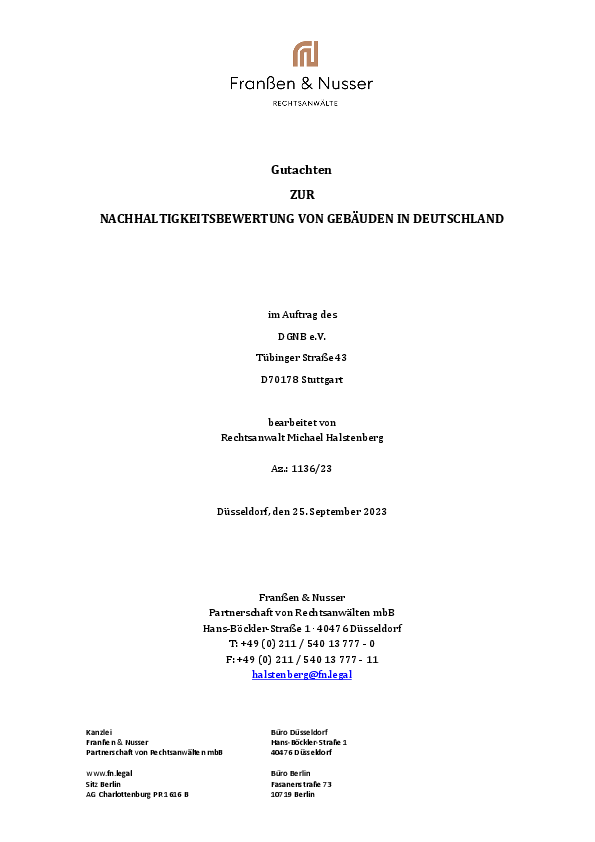
DGNB Expert opinion on the sustainability rating of buildings in Germany
The DGNB commissioned an independent legal opinion from the law firm Franßen & Nusser in order to gain a better understanding of the situation regarding the sustainability rating of buildings in Germany. The 60-page report, written by lawyer Michael Halstenberg, highlights the urgency of implementing targeted measures for greater sustainability and climate protection in the building sector. It provides an overview of the most important legislation and initiatives for sustainable construction in Germany and the European Union. In doing so, he critically examines the many incompatible developments.
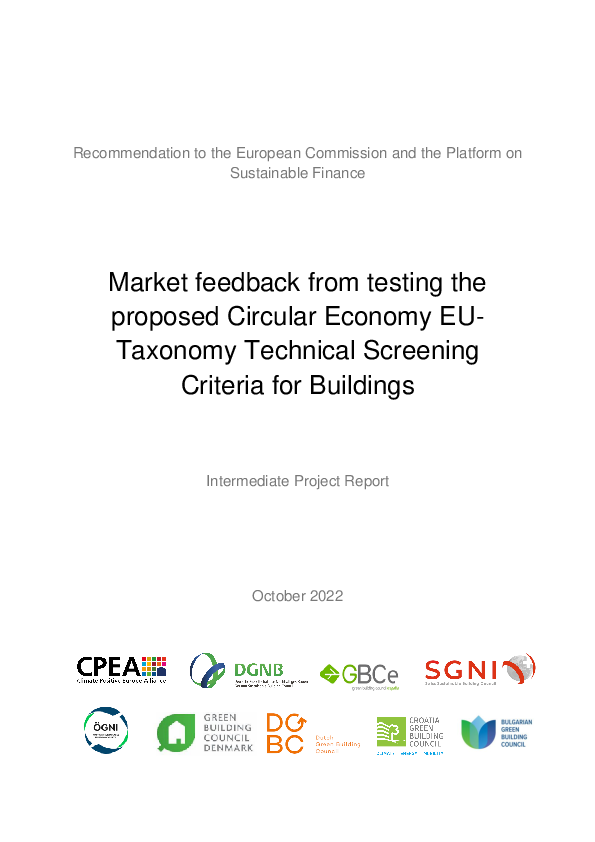
Market feedback from testing the proposed Circular Economy EU-Taxonomy Technical Screening Criteria for Buildings
In March 2022, the EU Sustainable Finance Platform proposed taxonomy screening criteria for new construction and renovation of buildings that contribute to the circular economy. To evaluate the marketability of the proposed technical screening criteria, a study consortium consisting of the DGNB, the Spanish (GBCe), the Danish (DK-GBC), the Dutch (DGBC), the Croatian (CGBC) and the Bulgarian Green Building Council (BGBC) as well as the Swiss (SGNI) and Austrian Sustainable Building Council (ÖGNI), and CPEA launched a joint study. At a roundtable on 7 October 2022, the study consortium presented a first intermediate report with recommendations to representatives of the European Commission and of the Platform on Sustainable Finance so that these can be taken into account in the optimisation of the criteria. The final report is planned for January 2023.

Benchmarks for greenhouse gas emissions from building construction
Reducing carbon dioxide (CO2) emissions is one of the most important current environmental policy goals. Targets for this were agreed worldwide within the framework of the Paris Climate Agreement of 2015. In Germany, the building sector has a significant share in CO2 emissions. In recent years, political and scientific interest has focused on the assessment of the operation of buildings and the associated emissions, but now the question of the assessment of the buildings themselves is increasingly being raised. In order to be able to classify and evaluate the building itself, there is currently still a lack of sufficient data. This is where the presented study comes in. Within the framework of the statistical evaluation of 50 eco-balanced buildings from the DGNB pool, benchmarks for greenhouse gas emissions [kg CO2e/m²*a] are derived.
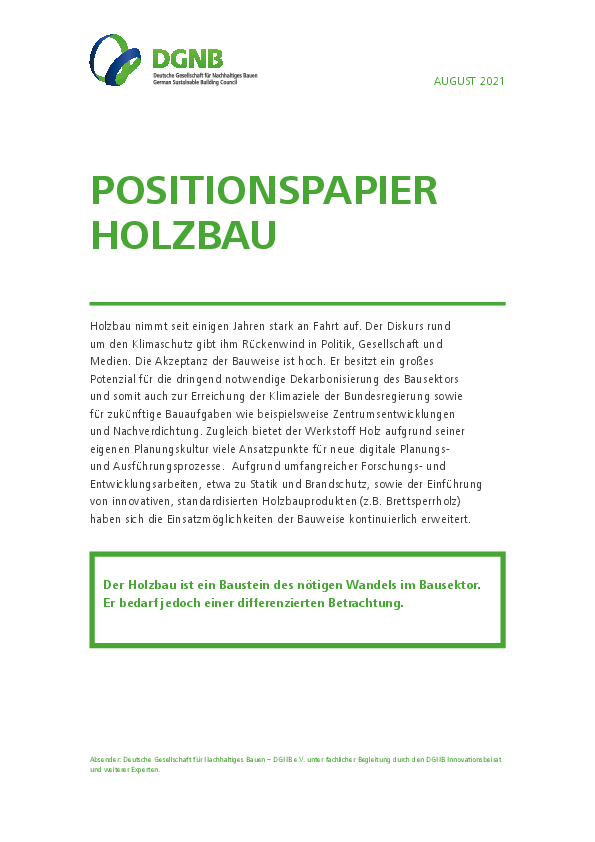
Wood construction requires differentiated consideration
Wood construction has been gaining momentum for several years. The discourse around climate protection is giving it a tailwind in politics, society and the media. Acceptance of the construction method is high. It has great potential for the urgently needed decarbonisation of the building sector and thus also for achieving the climate goals of the federal government, as well as for future building tasks such as centre developments and redensification. At the same time, wood as a material offers many starting points for new digital planning and execution processes due to its own planning culture. Due to extensive research and development work, for example on statics and fire protection, as well as the introduction of innovative, standardised timber construction products (e.g. cross laminated timber), the possible applications of the construction method have continuously expanded.
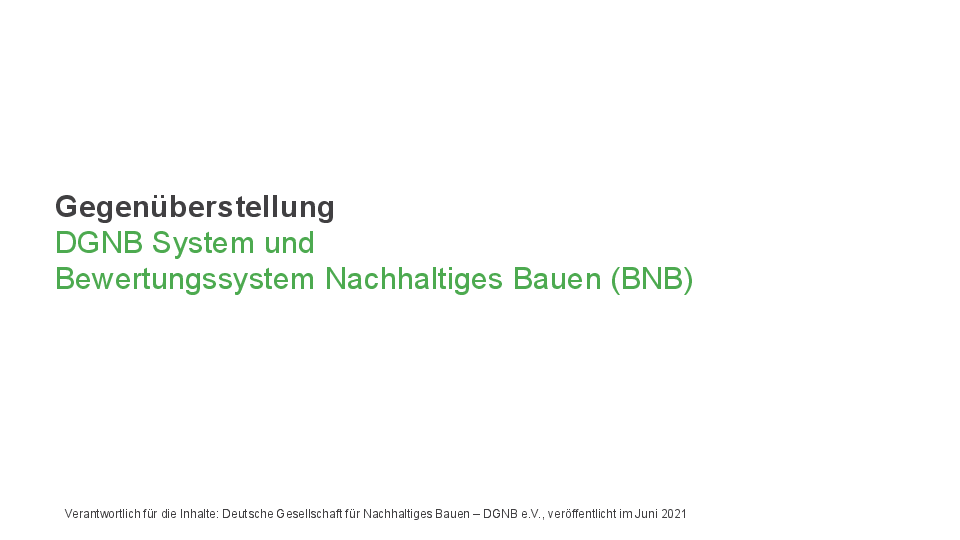
Comparison of the DGNB System and the Sustainable Building Assessment System (BNB)
The DGNB has drawn up a comparison between its own certification system and the Sustainable Building Assessment System (BNB). The systems, which were originally developed together, have evolved in very different ways in recent years. The document compares the two certification systems from a wide variety of aspects. It provides a status quo on the respective developments and is intended to provide clarity on the applications for which the systems are suitable in each case.
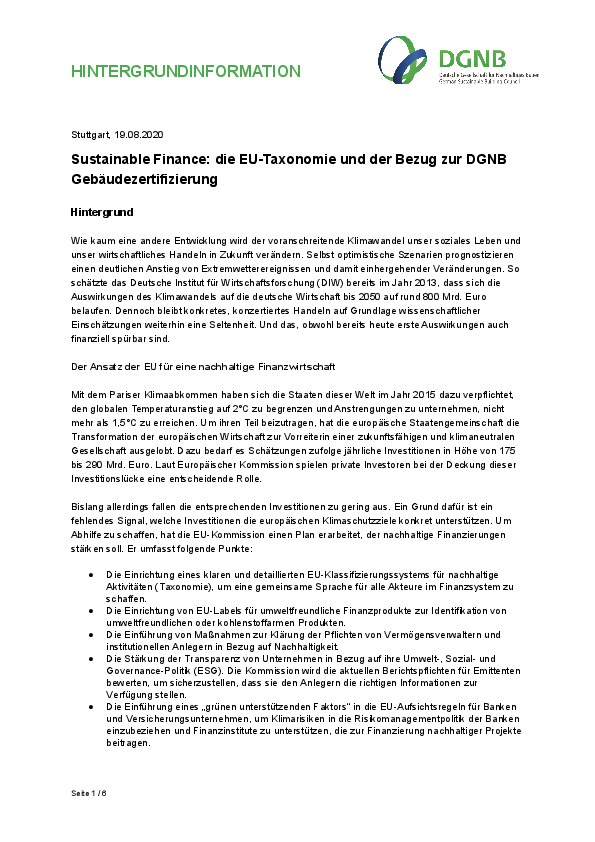
Sustainable Finance: the EU taxonomy and the relation to DGNB building certification
In a background information, the DGNB has compiled essential facts on the topic of "Sustainable Finance" and the contents of the EU taxonomy. This describes in detail the most important aspects of the classification system and its application in the construction and real estate sector. The comparison of the criteria of the EU taxonomy with the requirements of DGNB certification is also presented in more detail in the document.
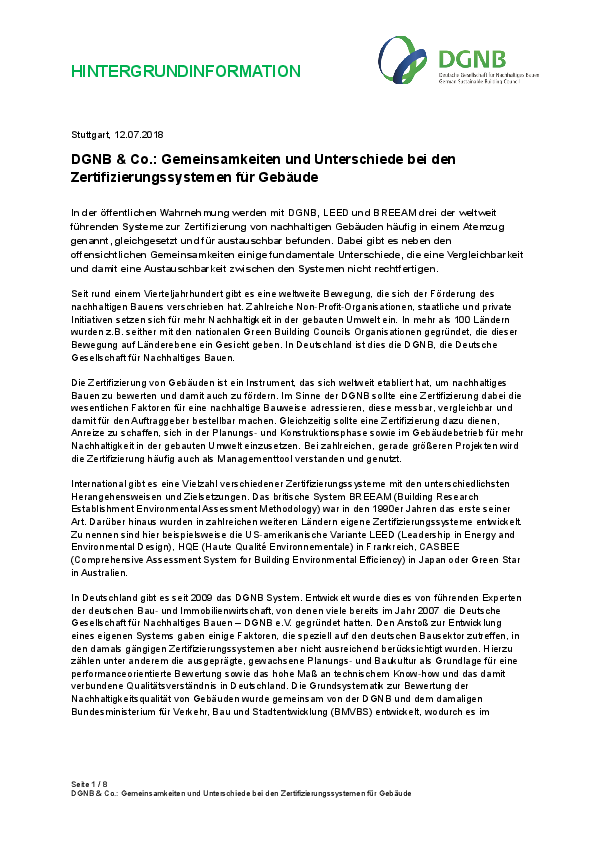
DGNB & Co.: Similarities and differences in certification systems for buildings
In the public perception, three of the world's leading systems for the certification of sustainable buildings - DGNB, LEED and BREEAM - are often mentioned in the same breath, equated and considered interchangeable. However, apart from the obvious similarities, there are some fundamental differences that do not justify comparability and thus interchangeability between the systems.
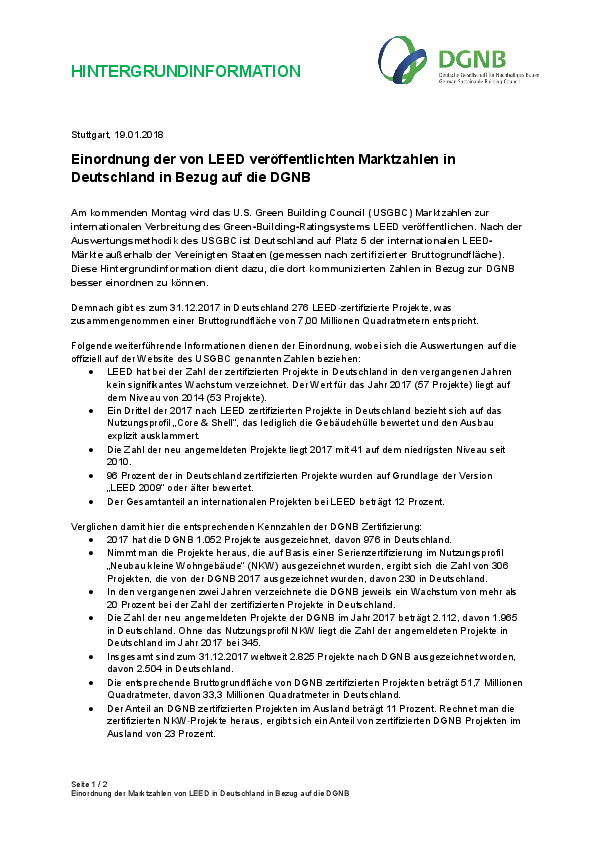
Classification of the market figures published by LEED in Germany in relation to the DGNB
The U.S. Green Building Council (USGBC) has published market figures on the international distribution of the LEED green building rating system. According to the USGBC's evaluation methodology, Germany is ranked 5th among international LEED markets outside the United States (measured by certified gross floor area). In a background information, it is presented how the figures communicated there can be classified in relation to the DGNB.
More publications and news
Your contacts
Felix Jansen
Director PR, Communications and Marketing
- Phone: +49-711-722322-32
- Email: F.JANSEN@DGNB.DE

